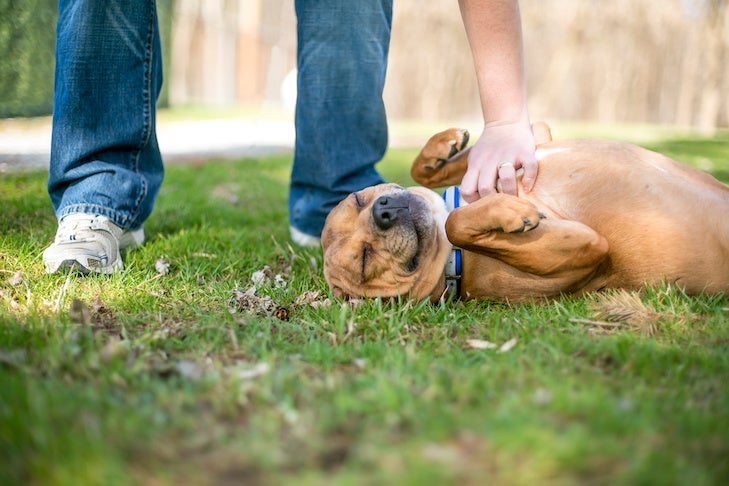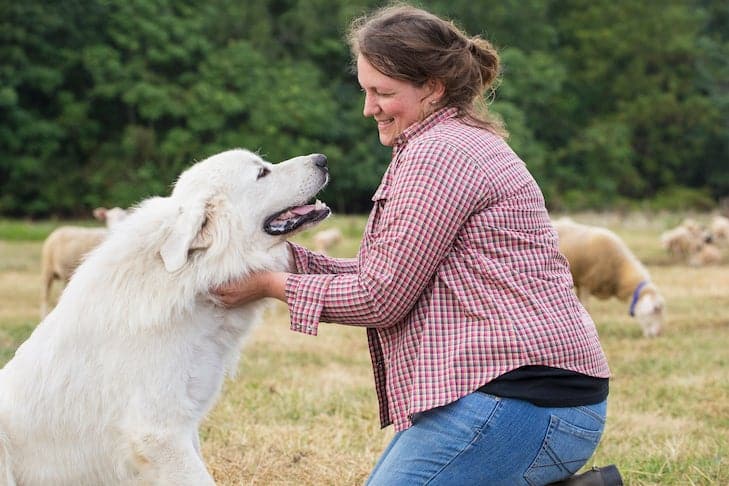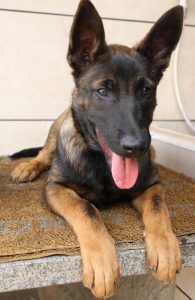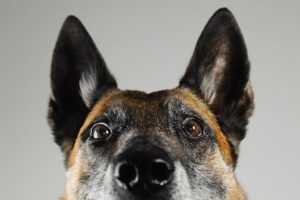What is that strange bump on your dog? Discovering a skin lump or bump on your dog can set your mind reeling and heart racing, but there’s no need to panic. A bump on your dog doesn’t automatically mean cancer. While skin bumps and strange lumps on dogs should always be taken seriously, certain types of bumps are more common than you might think, and they’re often harmless.
Types of Skin Lumps and Bumps on Dogs
Skin bumps that you’re likely to find on your dog fall into several categories. Some of these are more common in older dogs. As a new puppy owner, you’ll want to file these away and keep an eye out for them as your pup ages. While some of these are non-cancerous, some can be caused by infections or other underlying conditions. It’s always best to have a veterinarian examine and diagnose any changes to your dog’s skin and determine a course of treatment, if needed.

Lipomas
These fatty tumors appear as soft, round lumps of flesh beneath the skin. They’re made up entirely of fat cells and are always benign, or non-cancerous. Lipomas are usually found in older dogs and dogs who are overweight. Larger breeds are more prone to them, although they can be found in small breeds as well. Your vet may perform a fine needle aspirate, using a thin needle to collect cells and examine them under a microscope to verify that they’re fatty tissue.
Sebaceous Cysts
These are smaller bumps that can look like a pimple or a wart. They form from blocked oil glands and may burst and release a pasty, white goo. These most commonly occur in breeds with fine hair, like the Poodle and the Bichon Frise. They may disappear on their own, although some can remain for years and have the potential to become infected. Surgical removal is an option if they irritate your dog.
Warts
These small, cauliflower-like bumps are caused by the papillomavirus. They occur most often in puppies who don’t yet have fully-developed immune systems and usually disappear on their own. Although the virus is contagious between dogs, it can’t be transmitted from dogs to humans.
Skin Tags
These are fibrous bumps that look like small flaps or raised stalks of skin, although they may occasionally look like small bumps. They may or may not have hair growing on them. Skin tags are caused by overactive cells called fibroblasts and can occur in dogs of any breed or any age. They’re often harmless, although your vet might want to do a biopsy to make sure, especially if the tag changes in shape, color or size.
Abscesses
Usually caused by an infection, abscesses are swollen tissue that can form around bug bites, animal bites, infected glands, and other types of sores. If not treated early they may burst, which is painful for your dog. Antibiotics may be required to treat the infection.

Button Tumors
Also known as a histiocytoma, these are benign tumors that affect puppies and young dogs between eight weeks and three years of age. They’re caused by an overproduction of immune cells and typically disappear on their own.
Mast Cell Tumors
These are cancerous tumors that may occur either beneath or on top of the skin. They’re often solid to the touch and irregular in shape. The appearance of such a tumor should receive immediate attention from a veterinarian. They’ll likely want to remove the tumor, if possible, before performing a biopsy to determine if cancer might have spread through your dog’s body. If surgical removal isn’t possible, you may be referred to a veterinary oncologist for chemotherapy or radiation treatment.
Most Common Bumps and Lumps on Puppies
Thankfully, cancer in puppies is rare. The most common types of lumps or bumps found on puppies are warts, skin tags, button tumors, and abscesses. In these cases, your dog’s veterinarian may recommend a wart ointment or other skin treatment. There are also some supplements that claim to help dissolve fatty lipoma skin lumps on dogs. It’s also not unusual for puppies to develop swelling at the site of a vaccination injection, caused by a conglomeration of immune cells that gather there.
Typically, this vaccination site swelling subsides within a week. However, in rare cases, this gathering of cells can turn into a malignant tumor. Contact your vet if a vaccination lump lasts more than a week. They may advise you to keep a watchful eye on it and bring your pup in for a biopsy if the lump continues past three months, is more than an inch in diameter, or continues to grow or change shape.
Although it’s rare, it is possible for puppies to develop certain types of cancer, so it’s important to have any lumps, bumps, or other changes in your puppy’s skin examined by a veterinarian.

When Should You Worry About a Dog’s Skin Bump?
Have your dog examined immediately if you discover a lump that’s hard or firm to the touch, irregularly shaped, or if you notice a change in any existing lumps or bumps regarding size, texture, or color. Your vet should also immediately take a look at any bumps that ooze fluid. But again, while some lumps and bumps are harmless, it’s best to let your vet take a look at any new bumps or lumps on your dog and let your veterinarian make that determination.
Dealing with the possibility of tumors or infections in your dog or puppy can be costly as well as emotionally stressful for both you and your pet. Pet health insurance can help cover some of the cost, giving you one less thing to worry about and letting you focus on the best treatment options for your companion.








